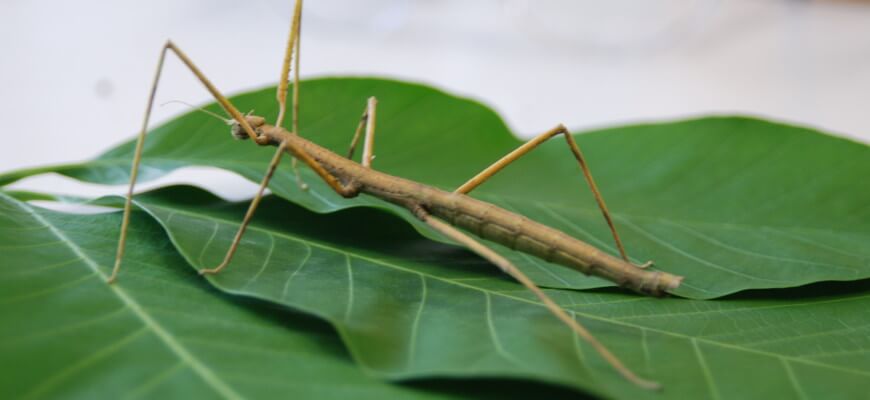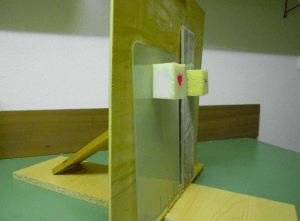Biology is quite a complex subject. Especially when you are trying to get deeper into a topic and understand how it is built up, functions and works, it can be very challenging and time-consuming to study a particular topic to its full extent.
Still – behind every complex function there is a basic principle or concept – somehow the ‘secret’ of a biological system. Nature does not always have numerous resources or possibilities to invent or construct something (let’s for example think of the 4-base-code in the DNA, which is pretty simple but encodes everything which builds up an organism).
As scientists in the field of Biomimetics, it is our job to identify these principles and abstract them to a level, at which they are understandable, reproducible and implementable for technology. I admit: this sounds easier than it actually is. But with a little know-how, the right technique and some experience, the abstraction process of a biological system is manageable for every dedicated person, intending to conduct biomimetic research.
I would like to explain this with the help of my first own biomimetic research project, which I conducted in my first semester of the Master course ‘Bionik/ Biomimetics in Energy Systems’ – having a degree in Biology but not really a clue what Biomimetics really is and how it works.
When I was in Australia in 2012, I observed stick insects climbing vertically on any kind of surfaces – glass, plants as well as stone or other rough surfaces. This fascinated me! Which mechanism did these animals use to ‘stick’? I therefore chose to study the adhesion mechanism of the stick insect (Carausius morosus) – which turned out to be a ‘wet adhesion’ mechanism – in my first Biomimetic project at University. My main goal was to understand the system and break it down to a simple principle, which can be tested and depicted in an easy experiment.
But first a little science: how does the wet adhesion mechanism work?
Stick insects possess highly sophisticated adhesive organs, which can be either of a hairy or smooth type [1]. The pad morphology is optimized in its ultrastructure and physical properties to be capable of strong adhesion forces when climbing a vertical or slippery surfaces with high gravity or shear forces acting [1]. The focus of my study was the wet adhesion mechanism of non-hairy pads. A fluid with Non-Newtonian properties is released in the interspace between the insect pad and the surface [2]. Hereby it is noticeable, that the insects manage to secret the correct amount of fluid to gain maximum contact area with the surface but avoid excessive fluid secretion, which would diminish the adhesion [2]. Additionally the insects do not seem to leave any ‘footprints’ behind, implying a reabsorption of the fluid after contact release [2].
So … in easier words: what is the underlying principle of this biological phenomenon?
The release of an optimal amount of a Non-Newtonian fluid in the gap between an object and a surface is able to enhance the acting adhesive forces. The object is capable of reabsorbing the fluid and controlling the amount of fluid released precisely.
Abstract and simplify for an easy experiment:
Now finally: the fun part starts. How can we try to explain and experimentally show this mechanism? First we need to find equivalents for all involved objects. I abstracted the insect pad to be a sponge (I chose sponges of different pore size, to compare different absorption levels) and the Non-Newtonian fluid to be a mixture of water and corn starch (I used water – a Newtonian fluid – as a comparison to test if the Non-Newtonian one is really better). The surfaces on which the sponge should adhere could be varied (I tested glass and stone tiles) and mounted onto a wooden ‘holding device’, which could be inclined in different angles. To re-enact the insect’s adhesion process, I dipped the sponges carefully into one of the different fluids, waited for it to drip of a little bit and then pushed the sponge onto the surface (compare picture below for the complete setup). In a next step, I Ioaded the sponges with cent coins and thereby measured how much the sponges could withstand before fall-off.
And what were my results?
… Does a Non-Newtonian fluid lead to a stronger adhesion than water? Which sponge pore size is working better? How does the adhesive forces change on smooth or rough surfaces?
In fact… this experiment reveals several interesting facts, but to show my experimental results and drawn conclusions was not my goal here ! I wanted to show you, how easy it can be to simplify a biological mechanism and develop an experiment with little and cheap material. If you are interested in the results – feel free to rebuild my setup and share/ compare your results in the comments! Have fun!
References:
[1] Bennemann, M., Scholz, I. and Baumgartner, W. [2011], ‘Functional morphology of the adhesive organs of stick insects (Carausius morosus)’, Proc. SPIE 7975, Bioinspiration, Biomimetics, and Bioreplication, 79751A, doi:10.1117/12.888841[2] Dirks, J.-H. and Federle, W. [2011], ‘Mechanisms of fluid production in smooth adhesive pads of insects’, J.R.Soc. Interface 8, 952-960, doi: 10.1098/rsif.2010.0575
Picture of stick insect : coypright Charchit Kumar.




